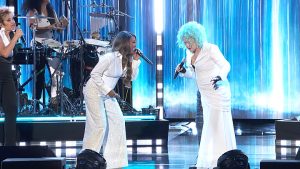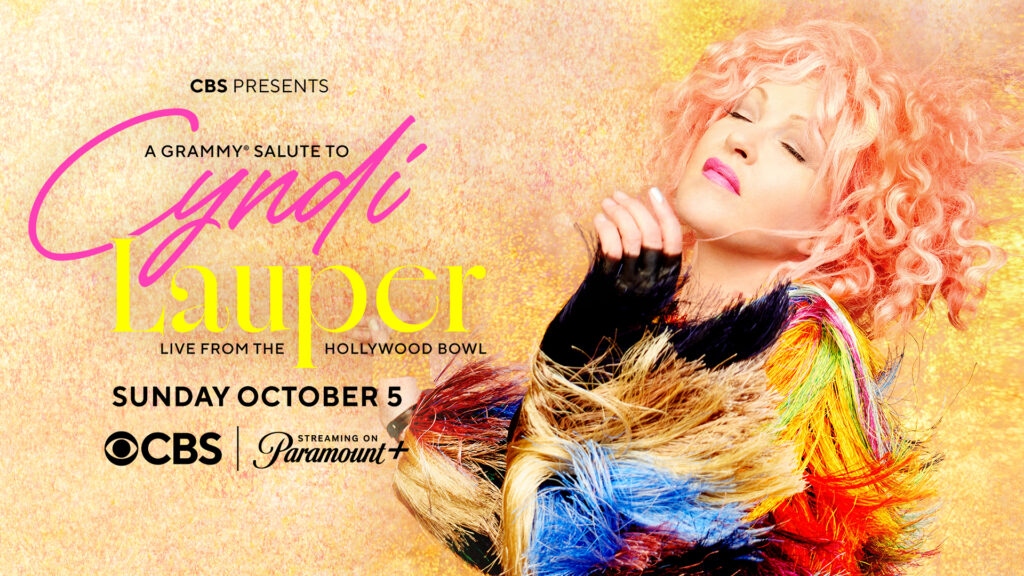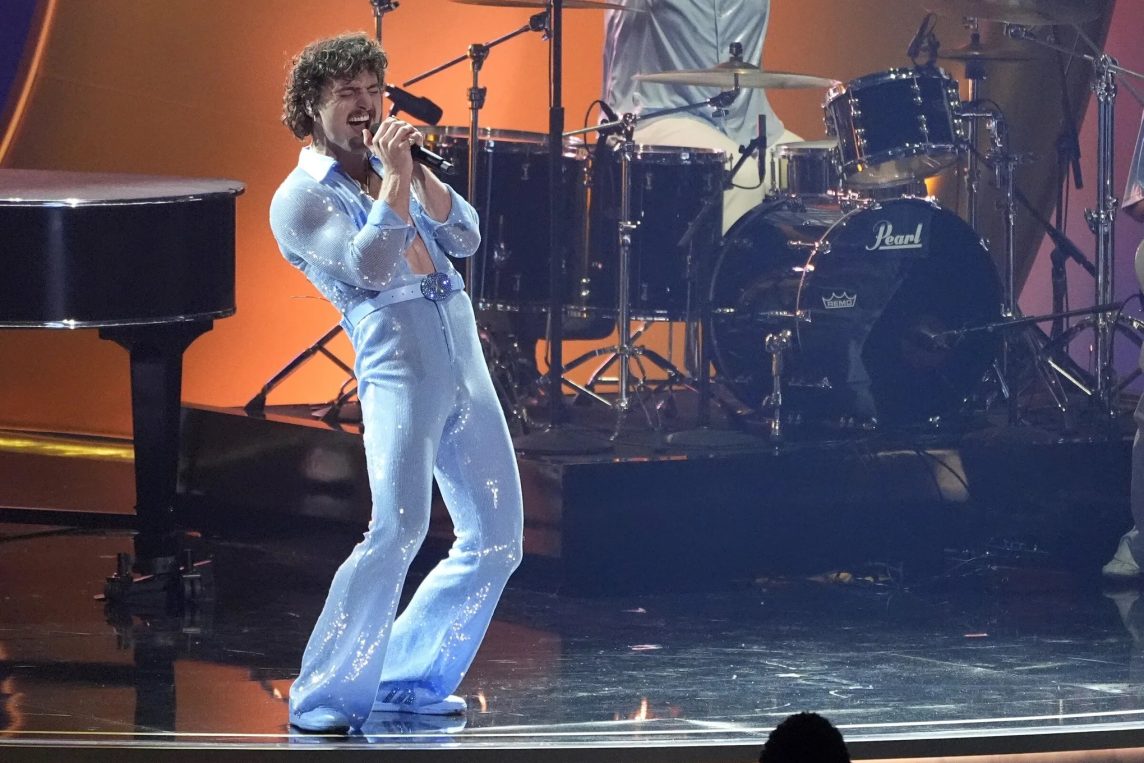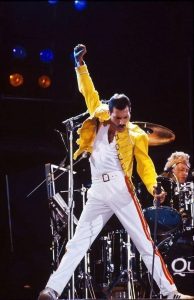 When Cyndi Lauper took the stage at the Hollywood Bowl for “A GRAMMY Salute to Cyndi Lauper: Live From the Hollywood Bowl,” it was more than a concert. It felt like a homecoming that was decades in the making. Over two nights of performances, filmed for broadcast on October 5, 2025, the special marked both the close of her “Girls Just Wanna Have Fun” farewell tour and the prelude to her Rock & Roll Hall of Fame induction later that year. It was a vibrant, emotional look back at one of pop music’s most fearless artists.
When Cyndi Lauper took the stage at the Hollywood Bowl for “A GRAMMY Salute to Cyndi Lauper: Live From the Hollywood Bowl,” it was more than a concert. It felt like a homecoming that was decades in the making. Over two nights of performances, filmed for broadcast on October 5, 2025, the special marked both the close of her “Girls Just Wanna Have Fun” farewell tour and the prelude to her Rock & Roll Hall of Fame induction later that year. It was a vibrant, emotional look back at one of pop music’s most fearless artists.
Setting the Stage: Timing, Scale, and Symbolism
Pulling off a tribute concert while the honoree is still performing is no small feat. Yet CBS, The Recording Academy, and Lauper’s team delivered something rare: a live television event that felt genuinely alive. The timing was perfect. Lauper wrapped her farewell tour with those Hollywood Bowl shows, then turned the finale into a filmed celebration of her career. Variety called it “a pleasing presentation of her farewell tour finale,” and the phrase fits perfectly.
There was symbolism everywhere. Lauper stood on one of America’s most storied stages, surrounded by artists she inspired and peers who helped shape her generation. For longtime fans, it felt like watching a circle close, while new audiences got to see why she still matters. Forty years after her debut, Lauper’s impact hasn’t dimmed one bit.
Standout Moments: Guests, Surprises, and the Emotional Peak
The show was built on collaboration and reverence. The guest list was staggering: Cher, Joni Mitchell, John Legend, SZA, Angélique Kidjo, Mickey Guyton, Trombone Shorty, and Jake Wesley Rogers. Each brought something personal, transforming the night into a living conversation between artists and eras.
When Joni Mitchell joined Lauper for “Carey,” the crowd fell silent. Lauper introduced her as “my hero,” and it showed. Billboard reported Lauper was visibly emotional, and it was clear this was not just a duet but a generational exchange between two icons.
And then came Cher. Their duet on “Girls Just Want to Have Fun” was pure theater. Both wore white coats with red polka dots, echoing Lauper’s early MTV style. They laughed, traded lines, and at one point Cher grinned and said, “No, you’re the queen.” The moment was lighthearted, funny, and full of mutual respect. It was two legends sharing the same oxygen and having fun with it.
“Time After Time” with John Legend
But the emotional centerpiece was Lauper’s duet with John Legend on “Time After Time.” It was stripped-down, heartfelt, and haunting in its simplicity. No heavy effects, no overproduction—just two voices, a piano, and the kind of quiet that lets the song breathe. Lauper’s tone was tender, Legend’s phrasing elegant, and the result was an interpretation that felt timeless.
It was also a reminder of how good songwriting never ages. “Time After Time” has lived many lives, but this performance felt personal, almost like Lauper was passing the torch to another generation. For musicians, it’s the kind of song you wish you had written: simple, melodic, emotionally bulletproof.
The Music as a Story
The setlist played like a career retrospective told through sound. She opened with “She Bop,” kept the energy high with “The Goonies ‘R’ Good Enough,” and then pulled the mood inward with “Sally’s Pigeons” and “I Drove All Night.” By the midpoint, “Time After Time” had the crowd swaying, phones aloft, and the finale—”True Colors” into “Girls Just Want to Have Fun”—brought everyone to their feet.
Across two nights, the arrangements changed slightly, but the feeling never wavered. It wasn’t nostalgia. It was gratitude. Lauper performed like someone who knew what her music had meant to people and wanted to give a proper goodbye.
Why This Tribute Was So Right
She redefined pop music. Lauper’s debut in the early 80s was a cultural shockwave. The sound, the look, the humor, and that unmistakable voice—all of it combined to create something new. She wasn’t built for trends; she made them. And that originality is exactly what this tribute honored.
She never stopped evolving. From “Kinky Boots” on Broadway (where she won a Tony Award for Best Original Score) to decades of touring, Lauper’s career proves that reinvention doesn’t have to mean compromise. The Hollywood Bowl special gave space for that range, letting her artistry shine beyond the pop hits.
Her advocacy is part of her art. Lauper’s True Colors United continues to fight LGBTQ+ youth homelessness, and her compassion runs through everything she does. Hearing “True Colors” performed with that in mind hits differently—it reminds you that pop music, at its best, can still change lives.
Why Bell & Field Love Playing “Time After Time”
At Bell & Field, we play “Time After Time” at almost every show. It’s one of those songs that stops people mid-conversation when they hear it from a male perspective. The chord structure is simple, the lyrics are universal, and it has an emotional truth that never gets old. Whether it’s played at a wedding, a small club, or a festival stage, it feels like everyone in the room knows what it’s about: loyalty, tenderness, and time itself. Watching Lauper and Legend revisit it only deepened that connection. It reminded us why we love playing it and why audiences keep asking for it.
The Lasting Impression
Many tribute shows rely on nostalgia, but this one did more. It showed how Lauper’s music still resonates, how her attitude still inspires, and how her songs continue to hold emotional weight. It wasn’t a memorial. It was a living document of her impact.
By the end of the night, with the Bowl bathed in rainbow lights and thousands singing “True Colors,” it was impossible not to feel the power of what she built. The message was clear: Cyndi Lauper isn’t just part of music history. She’s part of music’s DNA.




 Perhaps the strongest connection between Boone and Mercury lies in their charismatic stage presence. Mercury famously electrified stadiums with flamboyant costumes, interactive audience participation, and unmatched energy. Boone, though early in his journey, has rapidly become known for dramatic performances—most notably, performing backflips off his piano and engaging intimately with his audience.
Perhaps the strongest connection between Boone and Mercury lies in their charismatic stage presence. Mercury famously electrified stadiums with flamboyant costumes, interactive audience participation, and unmatched energy. Boone, though early in his journey, has rapidly become known for dramatic performances—most notably, performing backflips off his piano and engaging intimately with his audience. Freddie Mercury’s impact transcends music, breaking cultural barriers around gender and sexuality at a time when society was far less accepting. His legacy remains monumental—immortalized by global hits, statues, films, and continued cultural reverence. Boone, emerging in the era of TikTok and viral streaming, navigates a vastly different landscape. While he’s achieved remarkable early success, Boone hasn’t yet faced (nor likely will he replicate) the groundbreaking cultural challenges Mercury overcame.
Freddie Mercury’s impact transcends music, breaking cultural barriers around gender and sexuality at a time when society was far less accepting. His legacy remains monumental—immortalized by global hits, statues, films, and continued cultural reverence. Boone, emerging in the era of TikTok and viral streaming, navigates a vastly different landscape. While he’s achieved remarkable early success, Boone hasn’t yet faced (nor likely will he replicate) the groundbreaking cultural challenges Mercury overcame.